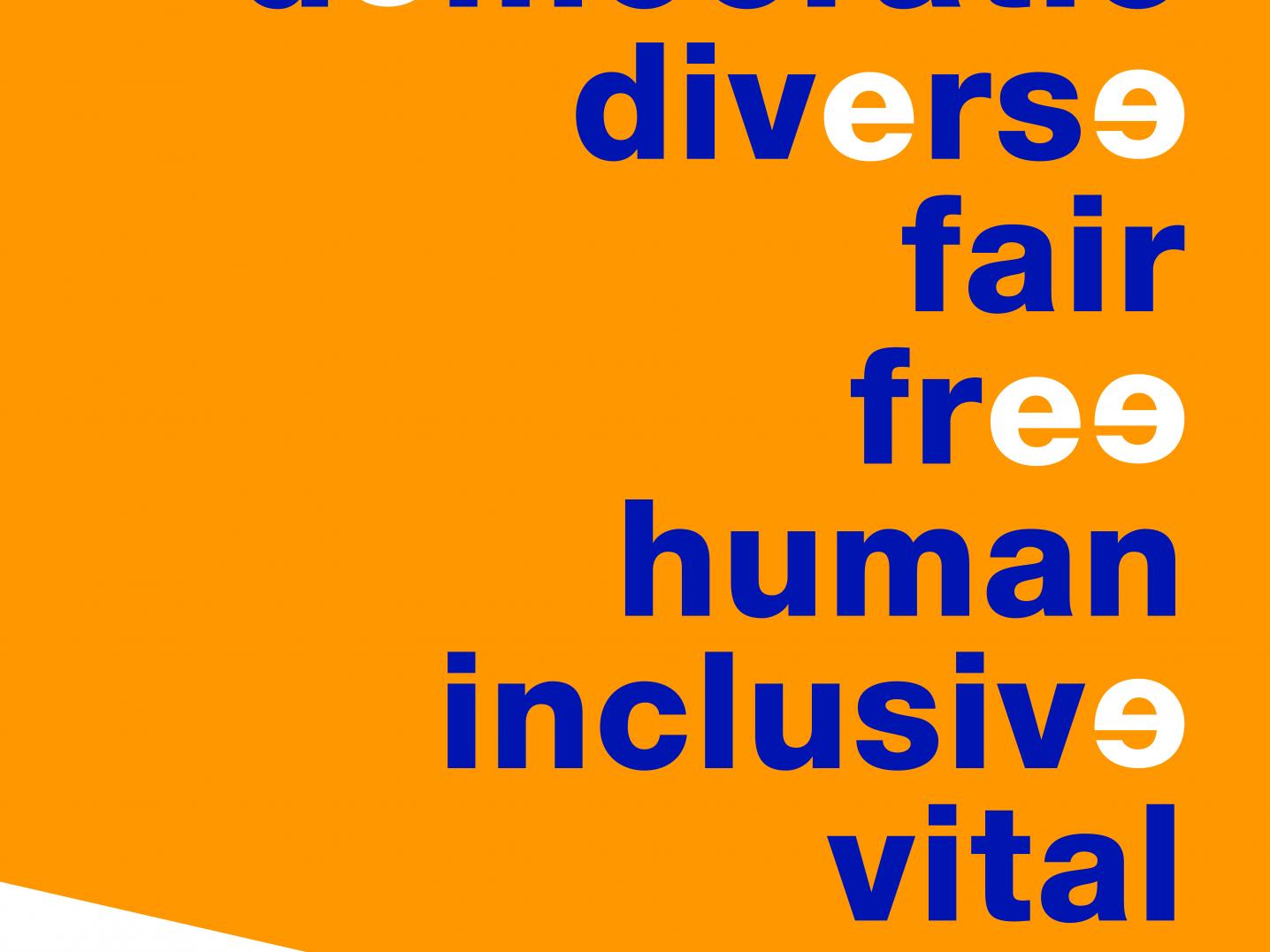
By Simon de Leeuw
The recent informal European Council summit in Sibiu, Romania, marked a moment of convergence among the European heads of government ahead of the European Parliament Elections. It resulted in a joint declaration evoking a spirit of unity “through thick and thin,” and a Strategic Agenda for 2019-2024, with a strong emphasis on environmental and security concerns. A single mention is reserved for culture, as under the header “safeguarding our way of life” the short mantra “invest in culture” is stipulated. While this is great news, what else is there to know about culture ahead of the European Parliament Elections?
Collecting data on all international activities from and to the Netherlands with the new version of Buitengaats, we can look at some of the main trends in terms of cultural exchange between the Netherlands and its European fellow member states. DutchCulture is uniquely positioned to share figures that can highlight the significance of cultural collaborations within the European Union.
Top 50 Country destinations. In bold: EU member states
|
|
Country |
Number of events |
|
|
Country |
Number of events |
|
1 |
Germany |
3281 |
|
26 |
Mexico |
67 |
|
2 |
United States |
2239 |
|
27 |
Finland |
63 |
|
3 |
Belgium |
1107 |
|
28 |
Egypt |
58 |
|
4 |
United Kingdom |
911 |
|
29 |
Argentina |
58 |
|
5 |
France |
840 |
|
30 |
Colombia |
54 |
|
6 |
China |
685 |
|
31 |
Greece |
53 |
|
7 |
Turkey |
484 |
|
32 |
Romania |
52 |
|
8 |
Russia |
465 |
|
33 |
Norway |
52 |
|
9 |
Japan |
462 |
|
34 |
India |
49 |
|
10 |
Italy |
441 |
|
35 |
New Zealand |
48 |
|
11 |
South Korea |
409 |
|
36 |
South Africa |
46 |
|
12 |
Brazil |
336 |
|
37 |
Slovenia |
44 |
|
13 |
Spain |
326 |
|
38 |
Croatia |
43 |
|
14 |
Poland |
258 |
|
39 |
Israel |
42 |
|
15 |
Switzerland |
253 |
|
40 |
Serbia |
40 |
|
16 |
Australia |
230 |
|
41 |
Taiwan |
40 |
|
17 |
Canada |
189 |
|
42 |
Luxembourg |
36 |
|
18 |
Austria |
175 |
|
43 |
Morocco |
33 |
|
19 |
Indonesia |
150 |
|
44 |
Slovakia |
29 |
|
20 |
Czech Republic |
112 |
|
45 |
Costa Rica |
26 |
|
21 |
Denmark |
103 |
|
46 |
Macedonia |
24 |
|
22 |
Portugal |
87 |
|
47 |
Estonia |
23 |
|
23 |
Sweden |
87 |
|
48 |
Bosnia and Herzegovina |
23 |
|
24 |
Hungary |
73 |
|
49 |
Thailand |
23 |
|
25 |
Ireland |
72 |
|
50 |
Vietnam |
21 |
Mobility
The EU continues to play a big role in the Netherlands’ international cultural activities. Firstly, of course, as the playground and domain for cultural activities. In 2018, 54% of all Dutch international cultural events took place in the EU, and five of the top ten most visited countries for Dutch artists were in the EU. While represented most strongly in nearby countries (Germany, Belgium, UK, France, Italy), events were spread across Europe with Dutch artists working in 1538 cities across every single EU country.
Dutch cultural professionals flourish thanks to the ability to travel freely and quickly across the Schengen zone. Even though the consequences of Brexit are still unpredictable, it is not difficult to imagine that further barriers to the free movement of goods, persons or services will reduce the likelihood of UK-bound tours, collection loans, exhibitions or performances. In terms of international exchange, It is in the interest of the cultural field of the Netherlands to minimize these impediments to mobility, also for those artists who are not EU nationals.
DutchCulture’s Mobility Info Point’s many incoming questions have flagged such obstacles more than once. Artists and creatives are still often blocked due to the lack of legal status, visa problems and the slow pace of administrative processes. We are convinced that increased mobility for artists is key in developing skills, intercultural awareness, co-creation and the participation to international events and express our support to European efforts to increase access to an open cultural ecosystem, such as special Schengen visa for artists.
Calls
Apart from highlighting the ‘open doors’, the 2018 data and trends can also help to inform us about potential room for improvement at the level of European funding programmes.
To illustrate, the Buitengaats discipline breakdown is mirrored within the EU. This means that while certain sectors work very well without any form of stimulation, other sectors can benefit from support to help stimulate growth in Netherlands-EU activities. For example, in the music sector, which accounts for 48% of events in the EU, only 9% of international activities are subsidized. Contrastingly, although the field of literature makes up only 7% EU activities, 74% of international activities in the field of literature are subsidized. Some sectors may need more support than others.
Our experience is that Dutch artists and makers do increasingly know how to call upon European resources and funding programmes in a variety of disciplines. In 2018, the AV sector received close to 6 million euros from the Creative Europe: MEDIA programme, for example, establishing the Netherlands as one of the top benefactors within the EU. In a similar vein, the call for collaborations in the theme of the European Year for Cultural Heritage resulted in six Dutch grantees; this meant a 100% success rate in applications. DutchCulture’s Creative Europe: Culture Desk NL assisted all of the eventual grantees throughout the submission procedure. Making the subsidy programmes more accessible and available to the wider field is a recommendation that DutchCulture subscribes to in a recent letter written to Minister of Culture Ingrid van Engelshoven by a coalition of cultural organizations - the Europaplatform - spearheaded by Kunsten ‘92.
Talking points
In sum, Dutch cultural actors are oriented towards and dependent on Europe. The Netherlands stands to gain from further connectivity by sharing knowledge, finding new partnerships and increasing its own outreach. We advocate for a stronger recognition of the role of culture at the European policy level and are reinforced in our belief by the many partner organizations in the Europaplatform subscribing to the same message.
One of the reasons to speak out on this issue is the fact that culture seems largely absent from the debates surrounding these elections. Yet, there is a lot to think about and a lot that matters. First of all, the Commission’s proposal to increase the total budget available for Creative Europe 2021-2027 from €1.46 billion to €1.85 needs to be approved by the European Parliament and the member states. Another question is, for example, the extra need for a European regulation to safeguard the freedom of artistic expression in times of state censorship.
Whether these proposals – and any other coming from the Commission - will be realised, depends on the approval of the European Parliament and the party you vote for.
To learn more about the position of the participating European families on the role of culture ahead of the Elections, Culture Action Europe explored their manifestos. They also made a downloadable graphic toolkit for the election campaign.
For an overview of all Dutch supported projects by the Creative Europe programme, we gladly refer you to the publications made by Creative Europe Desk: Culture and MEDIA.
Read the letter proposed to Minister van Engelshoven by Kunsten ‘92 (Dutch).


